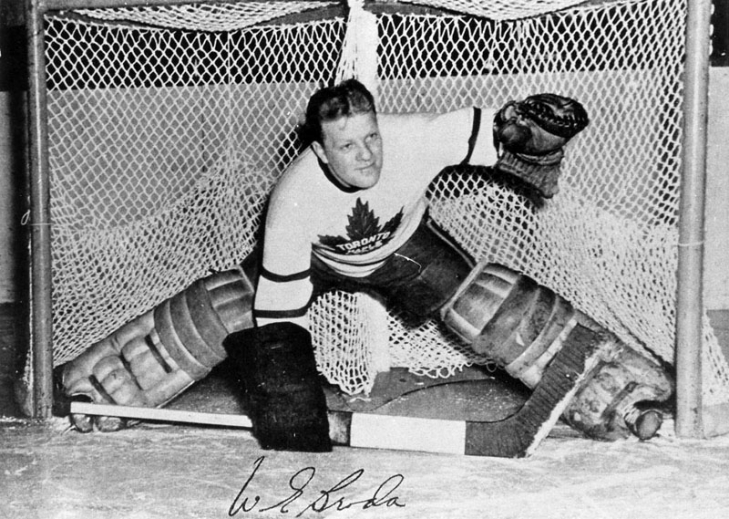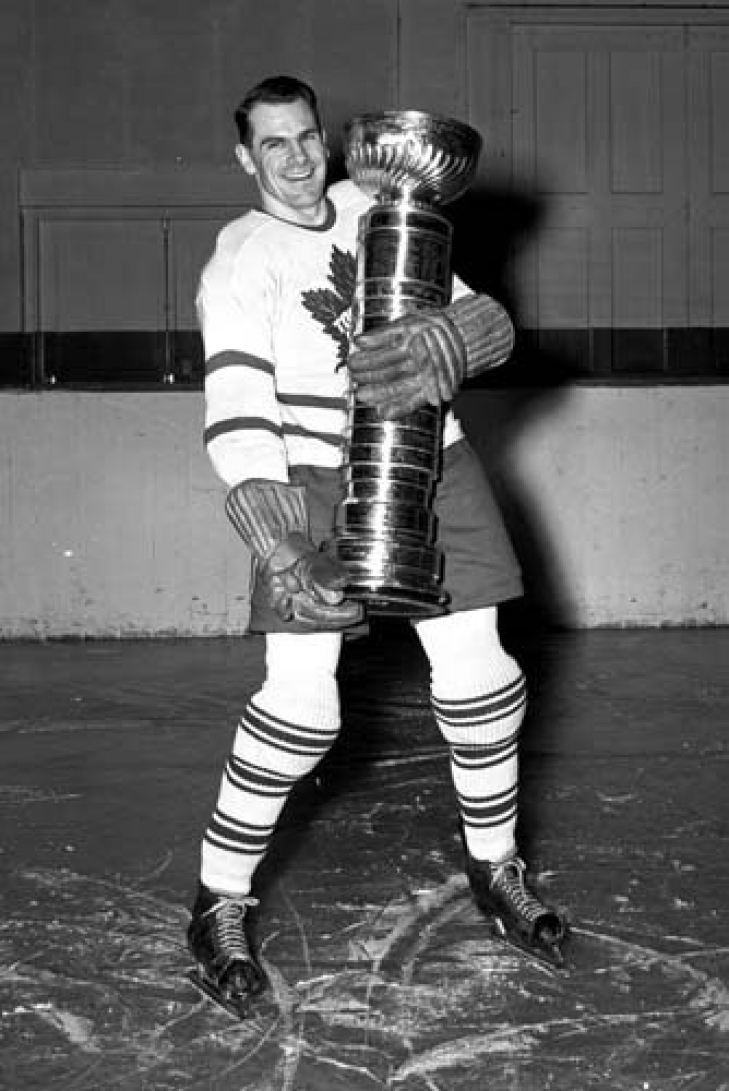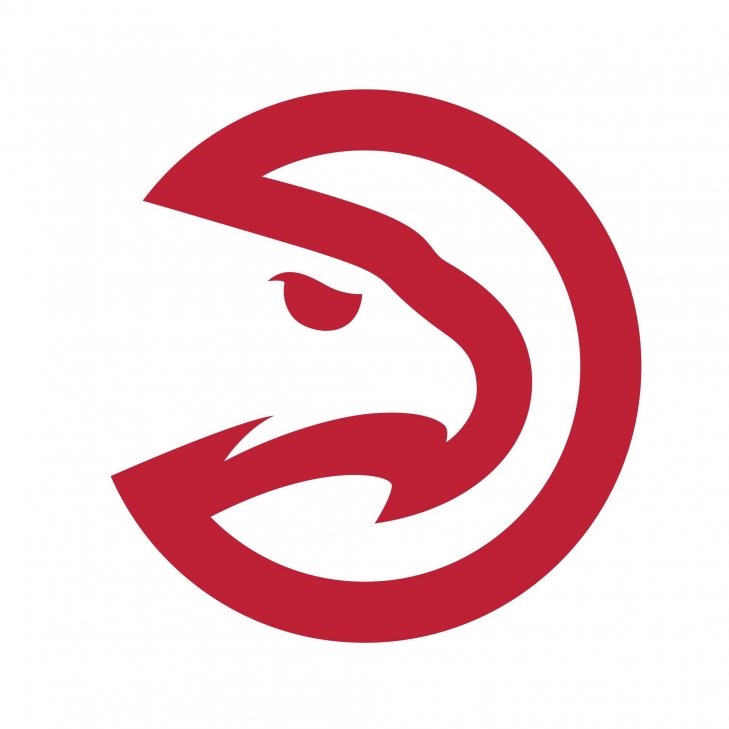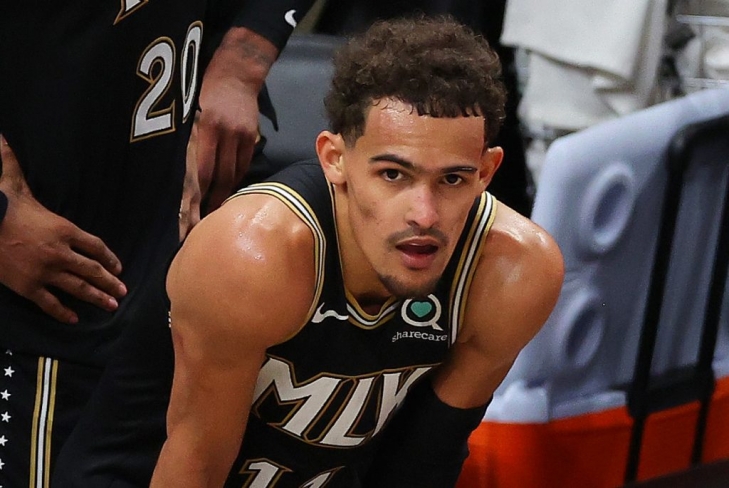
Committee Chairman
2. Turk Broda
Turk Broda played his entire NHL career with the Toronto Maple Leafs, and with all due respect to everyone else who wore the blue and white in between the pipes, it is Broda who is the most important.
Broda’s professional career began with the Detroit Olympics in the minor leagues, but his path to the NHL would not remain in the Motor City. The Olympics sold his contract to his hometown Maple Leafs, and he would become Toronto’s starting Goalie going into the 1936-37 season.
The Torontonian proved to be a top Goalie, and in the 1940-41 season, Broda won his first Vezina and would lead the Maple Leafs to a Stanley Cup win the year after. It was a special championship in sports, as the Maple Leafs became the first team to overcome a 3-0 Finals deficit to win the title. Broda’s work on the ice took a two-and-a-half-year detour due to World War II, but he returned better than ever.
Broda led Toronto to four Stanley Cups (1947, 1948, 1949 & 1951) in five years, winning a second Vezina in 1948. Age caught up to Broda in 1951, as he played in only 31 Games, and after appearing in only one contest in 1951-52, he retired from hockey with a career record of 304-222-102.
Broda was inducted into the Hockey Hall of Fame in 1967, and in 1995, his banner was hung to the ACC's rafters. Toronto officially retired his number #1 in 2016.
1. Syl Apps
If you look at the top ten that we came up with, we could make a case for any one of them as the best Toronto Maple Leaf of all time. Not only that, when you have a team with a long history and fervent fanbase of Toronto, you will likely find a list that has one of those men at the top. After what felt like weeks of analysis, we settled on Syl Apps as the greatest Maple Leaf ever.
Apps was an outstanding athlete who won the Gold Medal at the 1934 British Empire Games and would later be sixth at the 1936 Olympics. The multi-sport athlete was courted by the Toronto Maple Leafs to play, and he made immediate history as the first-ever Calder Trophy winner as the NHL's best rookie.
As a rookie, Apps led the NHL in Assists and did so again in his second NHL season. While the Center never won the Hart, from 1938-39 to 1942-43, he was either second or third in the balloting for the most coveted individual trophy in hockey. Apps also led Toronto to a Stanley Cup win in 1942.
Apps missed two seasons as he joined the Canadian Military for World War II, and the Center came back, still an elite player, where he led the Leafs to Stanley Cups in 1947 and 1948. The ’48 Cup win would be his final game in the NHL, ending a ten-year run all with Toronto.
Amazingly, he only had 56 Penalty Minutes over his career, and as such, Apps won the Lady Byng in 1942, was the runner-up for it twice, and the second runner-up another two times. While we again concede that there were others who could easily slide in at the top here, can anyone state emphatically that Apps shouldn't be number one? Not emphatically. Not a chance.
And, yes, we think we would have written those last three sentences had we gone with one of the others we considered for number one. This is how tight it was.
Apps entered the Hockey Hall of Fame in 1961, and his name was one of the first honored in the Air Canada Center in 1993. In 2016, his number 10 (which George Armstrong also had) was officially retired by the Leafs.
Our All-Time Top 50 Atlanta Hawks have been revised to reflect the last three seasons.
Yes, we know that this is taking a while!
As many of you know, we here at Notinhalloffame.com are slowly generating the 50 of each major North American sports team. That being said, we have existing Top 50 lists out and we always consistently look to update them when we can and based on necessity. As such, we are very happy to present our pre-2021-22 revision of our top 50 Atlanta Hawks
As for all of our top 50 players in basketball we look at the following:
1. Advanced Statistics.
2. Traditional statistics and how they finished in the NBA.
3. Playoff accomplishments.
4. Their overall impact on the team and other intangibles not reflected in a stat sheet.
Please note, that this is our first revision in three years, and as such, there are two significant debuts, that would not be so drastic had we did these the last two years.
As always, we present our top five immediately, though nothing has changed in this upper-tier.
1. Bob Pettit
3. Cliff Hagan
4. John Drew
You can find the entire list here.
The two new entries are stars of the past few years, and led Atlanta to the Eastern Conference Finals.
Power Forward and four-year veteran, John Collins enters at #28, and star three-year Guard, Trae Young, debuts at #29.
We welcome your input and comments and as always, we thank you for your support.
12. Trae Young
At the 2018 Draft, the biggest moment was when the Dallas Mavericks traded Trae Young for Luka Doncic to Atlanta, players who both teams just drafted, and were both hopeful that they both landed the man who would take them to the promised land. With the two linked together in perpetuity, Young will always be compared to Doncic, which may not be fair, but Young showed his share of scoring skills
Young was an immediate star, earning First Team All-Rookie honors with a 19.1 PPG and 8.1 APG. There was no sophomore slump for the Point Guard, who went to his first All-Star Game, and increased his production to 29.6 Points and 9.4 Assists per Game, with his PER rocketing to 23.9. 2020/21 saw Young’s numbers slightly decrease, but he had more help, and brought the Hawks to an Eastern Conference Final. 2021/22 was a disappointing one for the Hawks, as they regressed overall, but Young was outstanding, going back to the All-Star Game on his way to a 28.4 PPG Season, and a career-high PER of 25.4.
In 2022-23, Young was not able to make the All-Star Game, but still led the Hawks to the playoffs, and had a 26.2 PPG, the fourth year in a row that he averaged over 25 Points per Game. Last season, Young did make the All-Star (albeit as a replacement) and again averaged over 25 Points per Game (25.7).
Young's future with the Hawks might be on shaky ground, but the potent scorer can still carry Atlanta and steal wins.





